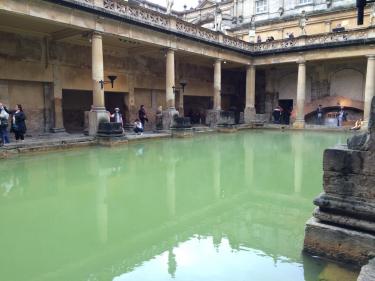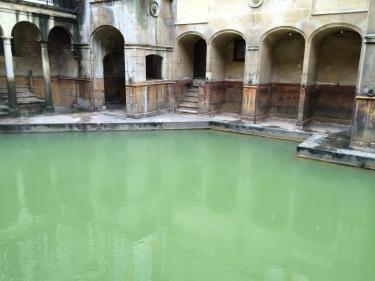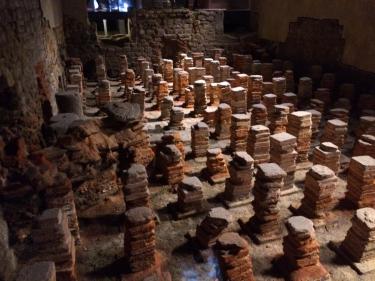While we’re in the mood of disagreeing with one of our favorite travel gurus, whose pseudonym we previously stated as Nick Reves, let’s talk about Bath. This is a town in southwest England that is the site of the excavations of extensive ancient Roman baths. We’ve yet to find a Loo, UK, but that might be because the Romans didn’t call them “loos”. I don’t know the Latin word for a toilet and don’t particularly want to look it up.
Nick Reves raves about Bath. It is an impressive sight, we agree, but if one of the reasons to avoid Stonehenge is that it’s out of the way, then few people would ever visit Bath. Unless, of course, you’re planning a grand getaway to Bristol, but as we’re pretty certain most Bristolians are doing all they can to get out for a holiday we can’t imagine you placing Bristol high on your vacation wishlist.
We’re just joshing of course, so please don’t report us to the Bristol Visitor’s Bureau. We found Bristol to be a fine city along the River Avon practically brimming with history, culture, and Nick Reves fans trying to find their way to Bath.
Anyway, we like Roman ruins so naturally we liked Bath. We just don’t understand why Mr. Reves would advocate skipping Stonehenge but go out of your way to visit Bath. If you plan to visit this area of England, by all means visit Bath. But if you’re on a once-in-a-lifetime vacation to Europe and have 5 days to spend in London, don’t sacrifice one of those days to go to Bath.
If you do get to Bath, you’ll find—as we did—some of the best-preserved Roman ruins anywhere. Their wonderful state of preservation is likely because the modern town of Bath built up and around the Roman site, sort of protecting it, and use of the baths—humans throughout the centuries have enjoyed immersing themselves in the thermal waters—has continued through the ages.
The baths are fed by a natural geothermal well. Water percolates up from below and is heated by the earth. Celtic peoples predating the Romans enjoyed hot baths as much as anyone so considered the steaming pool they found sacred. That whole sanctifying process might have been accidental, as an early druid or warrior eased into the water and moaned, “Oooh, this feels divine!” A few weeks later a temple to the Celtic god Sulis (the goddess of hot baths, shampoo-conditioner combos, and bath-bombs) was erected and enterprising druids were collecting admission fees and selling those little whirly things you shoot up into the sky with rubber bands.

The stone face that peered down at visitors to the Temple of Sulis-Minerva. It’s not the goddess, obviously (goddesses don’t usually have beards).

Gold bust of the goddess Sulis-Minerva
When the Romans invaded Britain in 43 AD, they had a much more advanced bathing culture and saw the opportunity to utilize far fewer slaves to heat water that Sulis had heated for the Celts (and thus make a much better margin on admission fees), so they appropriated the baths at sword and poker point. Their goddess of baths, however, was Minerva, but they feared the Celtic goddess Sulis might get peeved with a renaming of the baths and would stop heating the water. So they hedged and dedicated the baths to Sulis-Minerva. Up sprang a grand temple and an entire Roman city, complete with togas and tepidariums and olive oil and pizza and all that made a proper Roman civilization about as far from Rome as you could get in those days.

Items offered to, or lost in, the baths
Much of the most interesting archaeological displays at the Roman Bath’s museum are from that former Roman temple to Sulis-Minerva, including the splendid peak with stone face from over the entrance to the temple and an impressive gold bust of the dual Celtic-Roman goddess. Also quite interesting are all the offerings of coins and artifacts ancient visitors tossed into the waters and all the valuables bathers lost while soaking in the water.
If you do manage to get to see the Roman Baths at Bath, just remember that bathing is no longer actually permitted so leave your swimsuit (or toga) at your hotel.



More views of the baths, the bottom one showing the under-floor means for heating a room by circulating hot water beneath the floor to create something like a sauna






